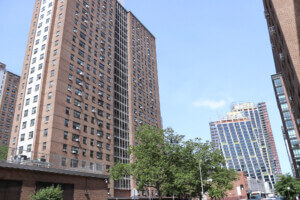In August, Vice reported that global design and engineering consultancy HDR, Inc., which among its manifold business verticals includes designing jails, has been monitoring the social media accounts of activists who oppose its clients’ projects. According to Vice’s reporting, HDR’s STRATA team provides a “social listening” service to identify protesters and their messages, then sends that information to the authorities and uses it to craft “strategic communications” campaigns to counter the dissent.
Vice’s story, which described HDR as “a multi-billion dollar architecture and design firm that has designed over 275 jails and prisons,” categorized the activities of the firm’s STRATA team as “corporate counterinsurgency.”
“When social movements threaten profits and political agendas,” it explained, “corporations and the government sometimes work side-by-side to neutralize those who oppose controversial projects.”
Documents obtained by Vice allegedly indicate that HDR surveilled Moadag Thadiwa, an activist group protesting a proposed highway cutting through the sacred Moahdak Do’ag mountains in Arizona. The news service also linked to a contract agreement between HDR and the administrator of Greene County, Ohio, for “justice consulting and planning services” relating to the design of a jail that needed voter approval. The contract contains the following deliverable: “Limited communications planning and staff augmentation with Greene County communications members focused on public education about the proposed facility.” The story also outlines how HDR’s STRATA team ingratiated itself with Massachusetts’ Division of Capital Asset Management and Maintenance, which was attempting to build a new women’s prison that ran into public opposition.
Through these examples and others, Vice sought to show that HDR is engaging in the business of “engineering consent” for its client’s controversial projects through coercive public relations campaigns. This runs counter to the firm’s stated commitment to engage with citizens and stakeholders so that their concerns and input are considered in the planning and design of public projects that will affect their lives and communities.
While HDR declined to respond to Vice’s request for comment, the firm did answer AN’s, sending the following statement: “HDR uses industry best practices to seek community input. In this effort, we use public data to gain a better understanding of the concerns faced by our audiences. This information helps us build strategies to seek broad-based community engagement. Awareness of public sentiment helps us amplify all voices that need better access to public processes. We stand by our commitment to deliver on our promise and work together to improve the communities where we live and work.”











